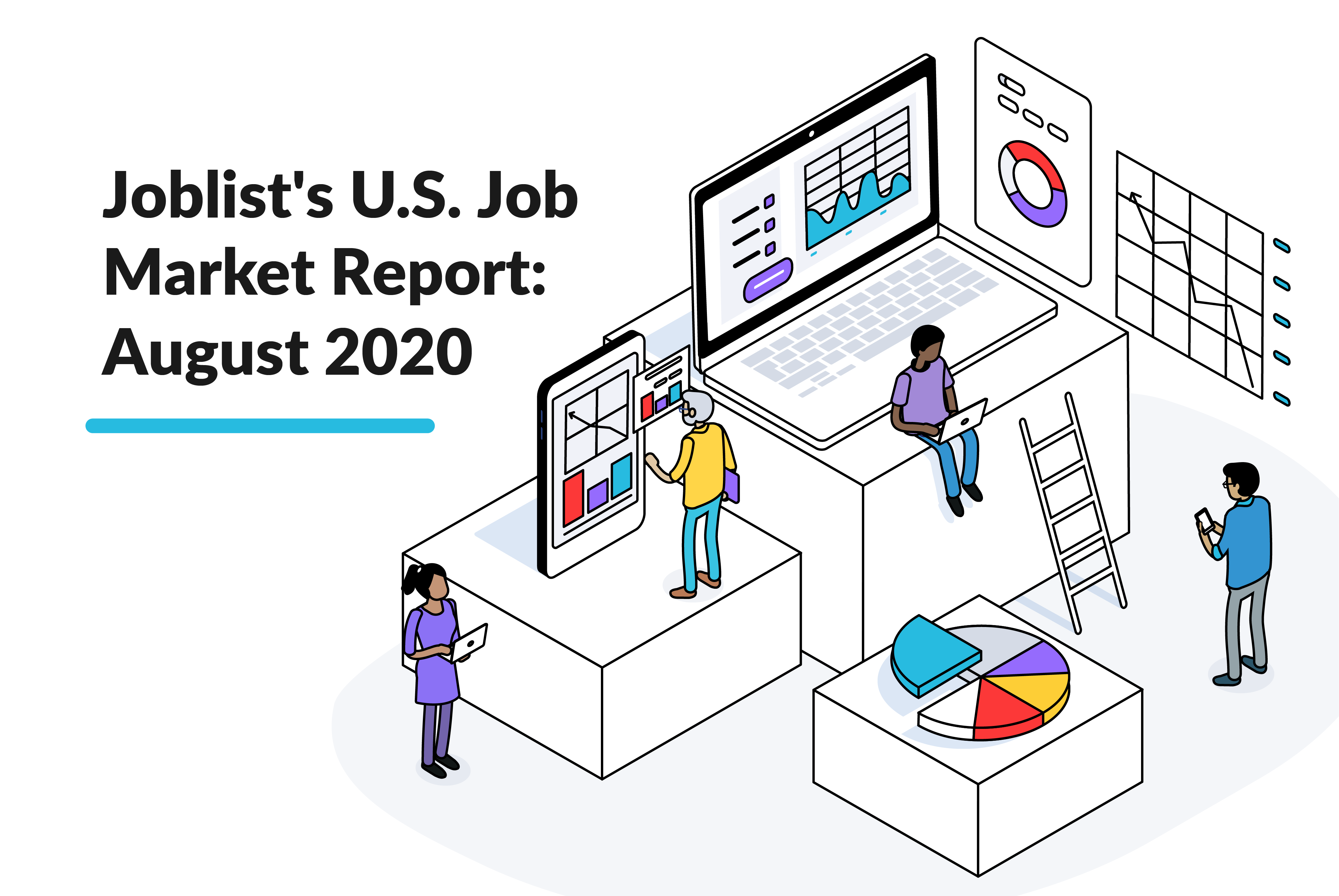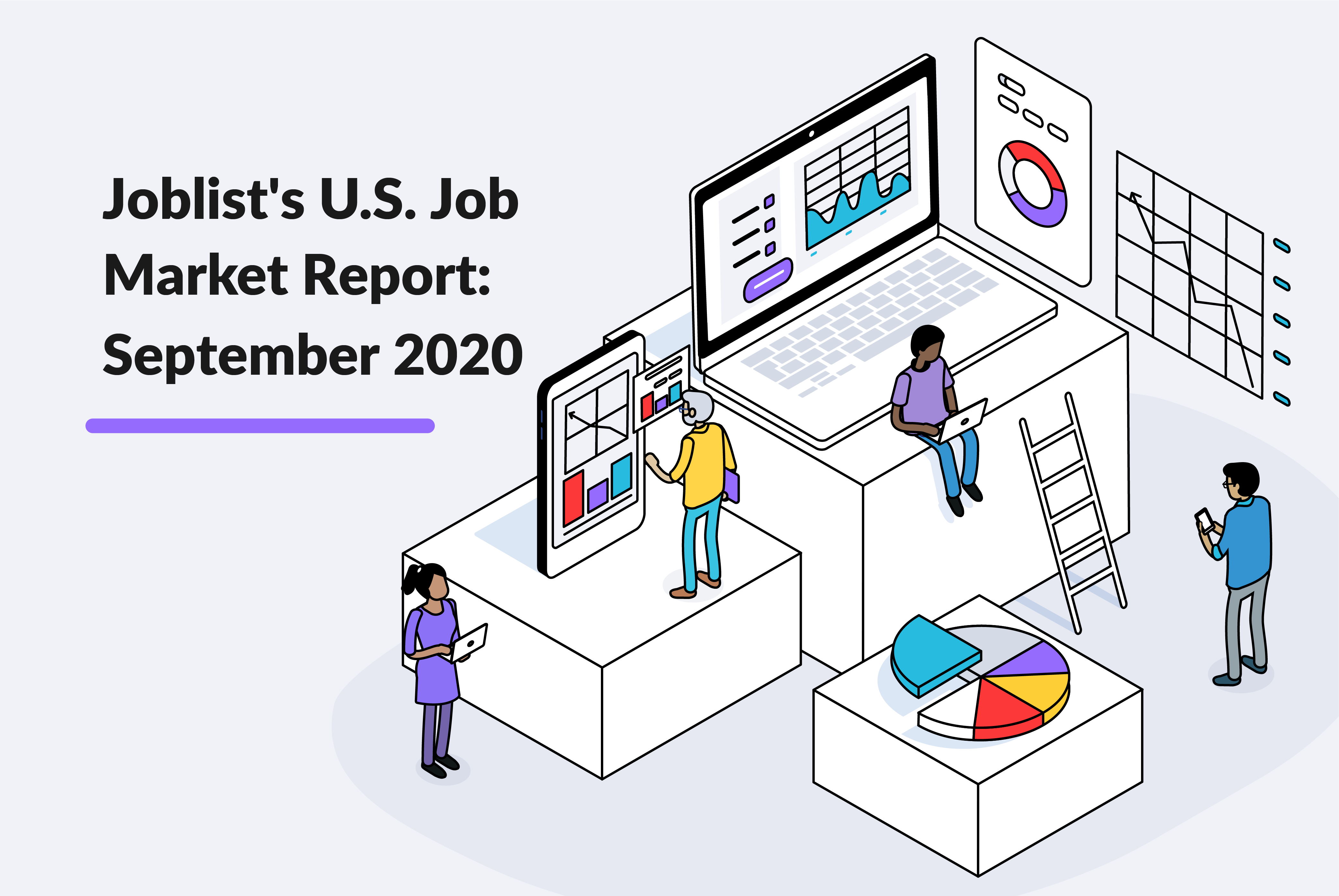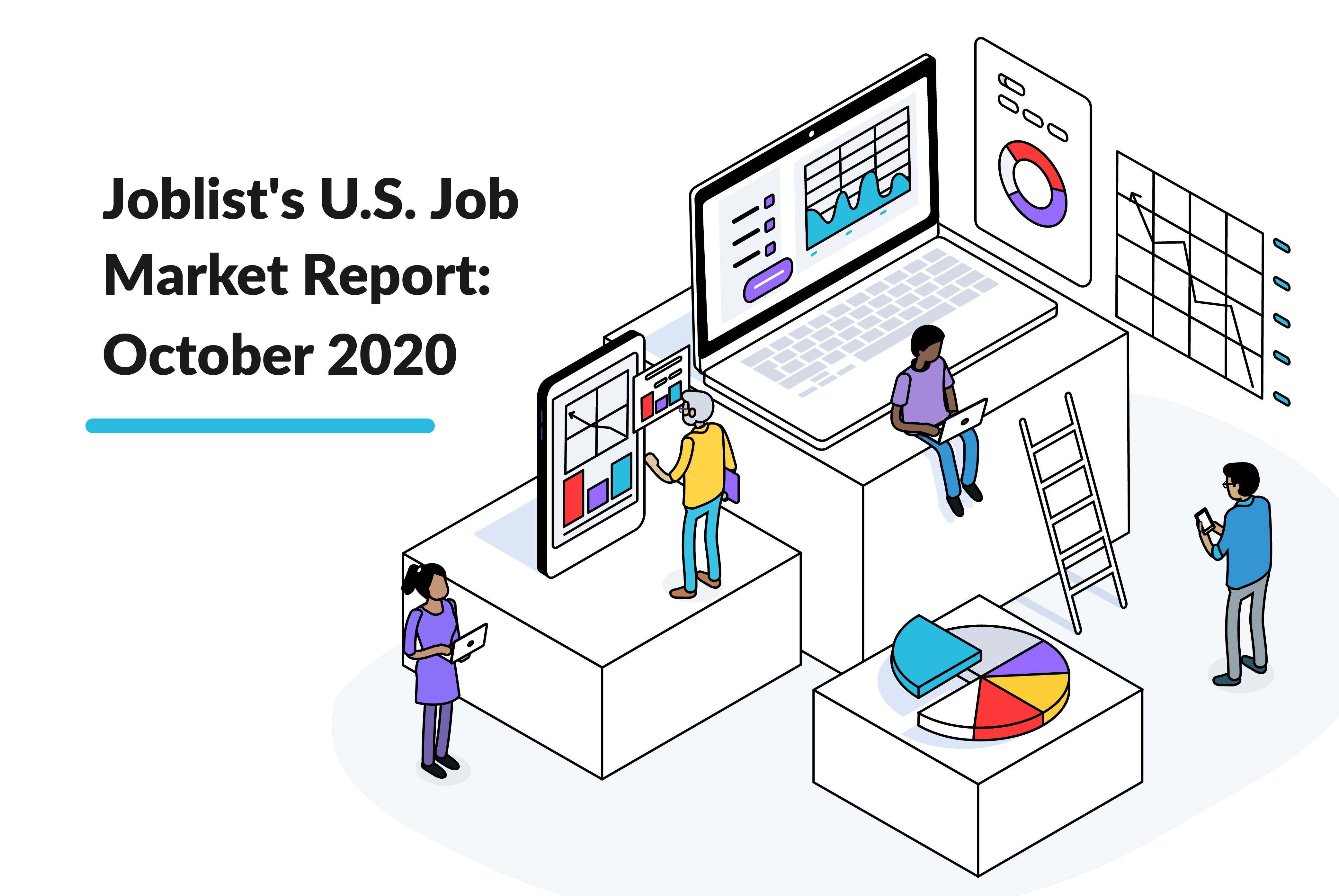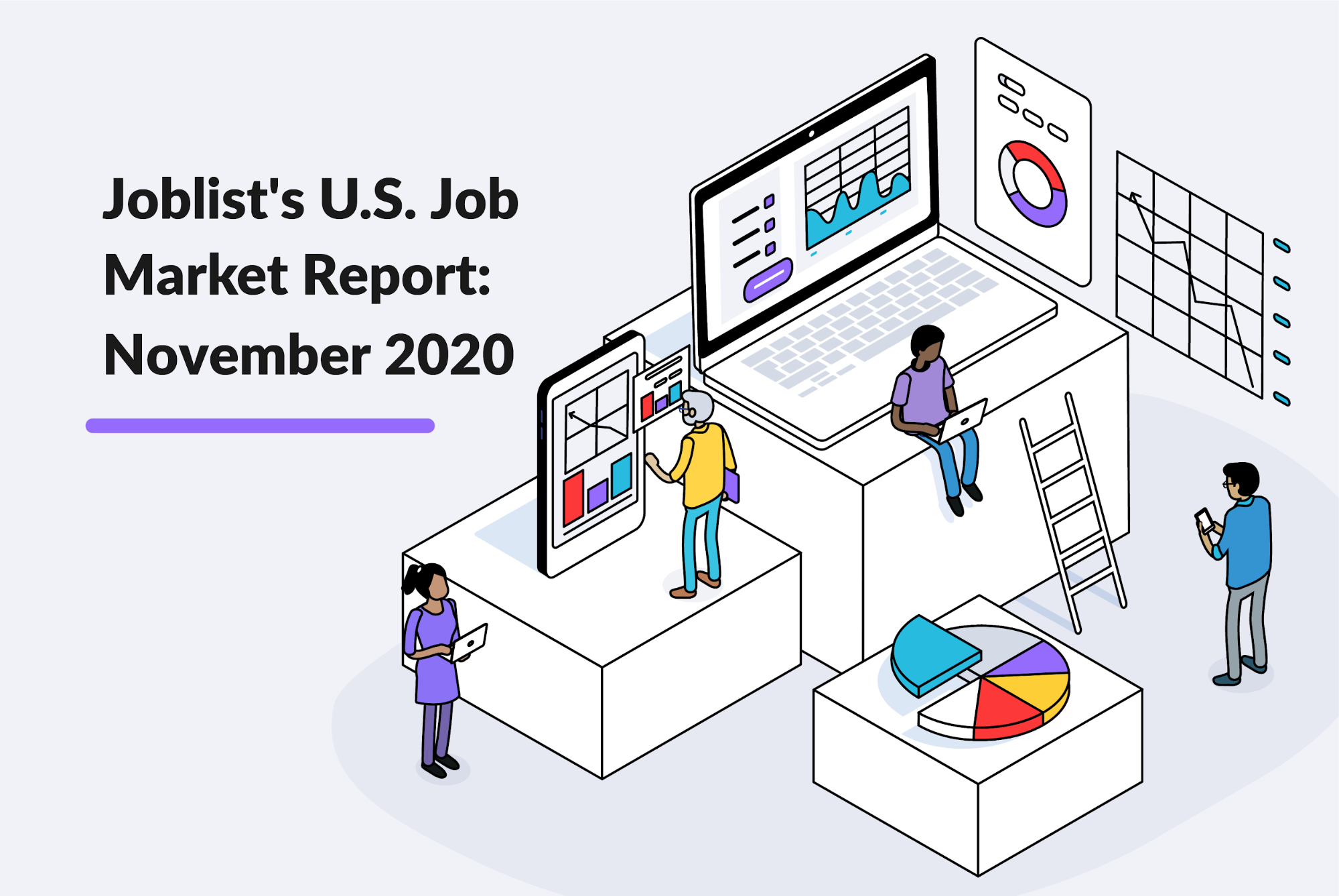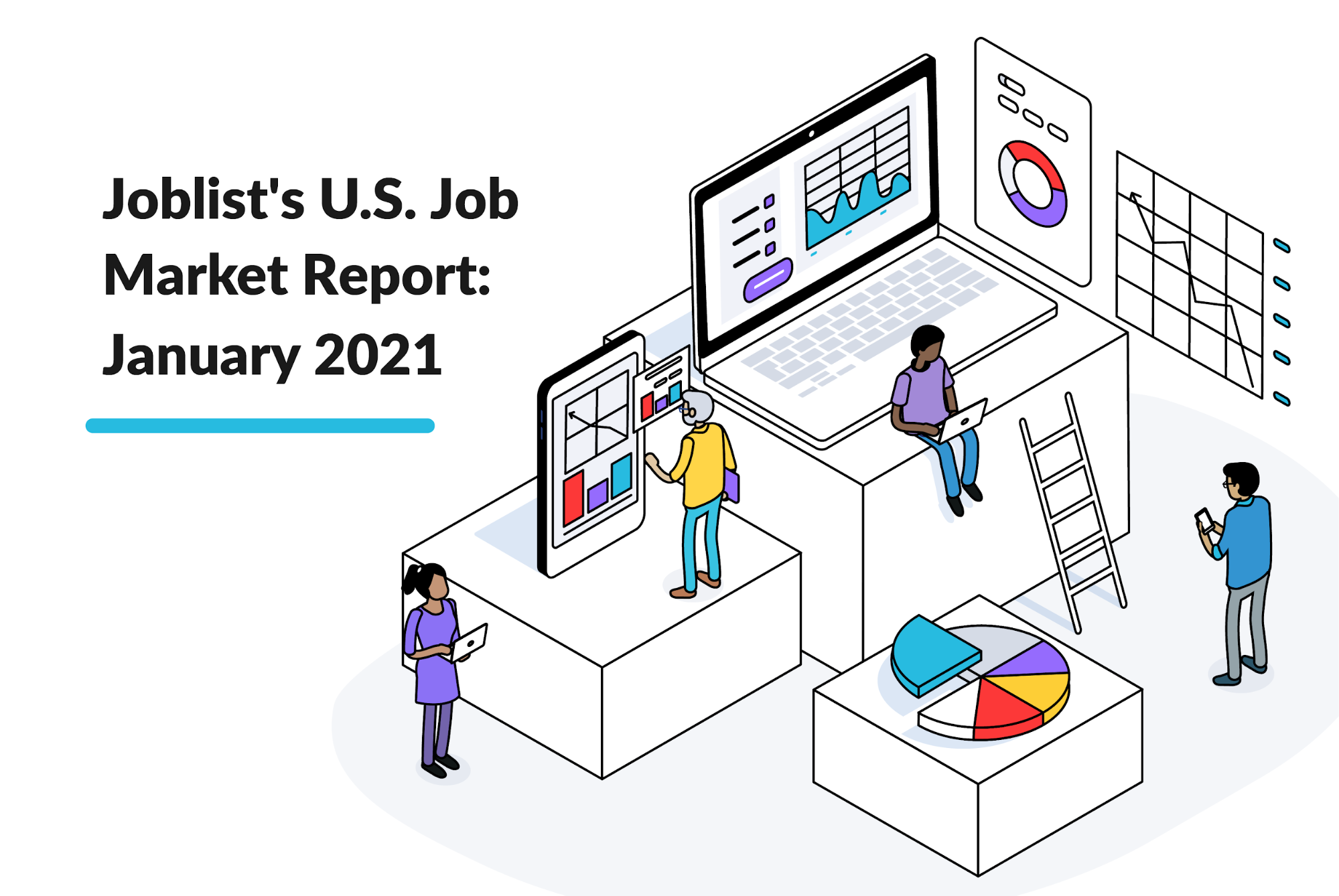- Job seeker activity decreased in July as COVID-19 cases have continued to resurge.
- Job seekers describe the current market as highly difficult, and there is uncertainty about future prospects across all industries.
- Unemployed and furloughed workers affected by the pandemic are more pessimistic.
- Interest in work from home opportunities has subsided in recent months and is significantly less important to American workers right now, in comparison to other job benefits like health insurance, PTO/sick leave, and a safe work environment.
July 2020 United States Job Market Report

Key Insights
Introduction
At the peak of the nationwide shutdown in April, as cases of the virus rose, America’s unemployment rocketed to over 14%. In just the first few months of the COVID-19 pandemic, unemployment in America was higher than it had ever reached during the two years of the Great Recession.
But now, nearly five months after the start of the global pandemic, the future is looking only slightly better for those affected. As states gradually reopen, jobs are slowly being created, but many Americans are still struggling to find new opportunities. With easing restrictions on businesses, and hopes of getting closer to a pre-COVID-19 norm continue, the U.S. Bureau of Labor Statistics reported the unemployment rate had decreased to 10.2% in July 2020. Sectors like retail, food service, hospitality, and education that were almost completely shuttered at certain points during the nationwide shutdowns, are even reporting increases in employment.
Still, as the uncertainty around the Novel Coronavirus continues, Americans are left wondering what the job market in America will be in the coming months, and even years. For a closer look, we dug into search trends on Joblist for over four million job seekers over the course of the pandemic. We also surveyed thousands of full-time, part-time, unemployed, and furloughed Americans to understand how things have changed since January 2020 – and where they might be headed next.
Job Searching During COVID-19
Following the typically busy hiring months of January and February, March saw the COVID-19 outbreak elevated to pandemic status, and businesses everywhere put the brakes on hiring. Job seeker activity fluctuated in March compared to January/February levels and then plummeted, falling by as much as 75% in late April from pre-COVID levels. It then surged back in June, leading to a V-shaped recovery curve, but has since leveled off and fluctuated in July as uncertainty has grown in recent weeks.
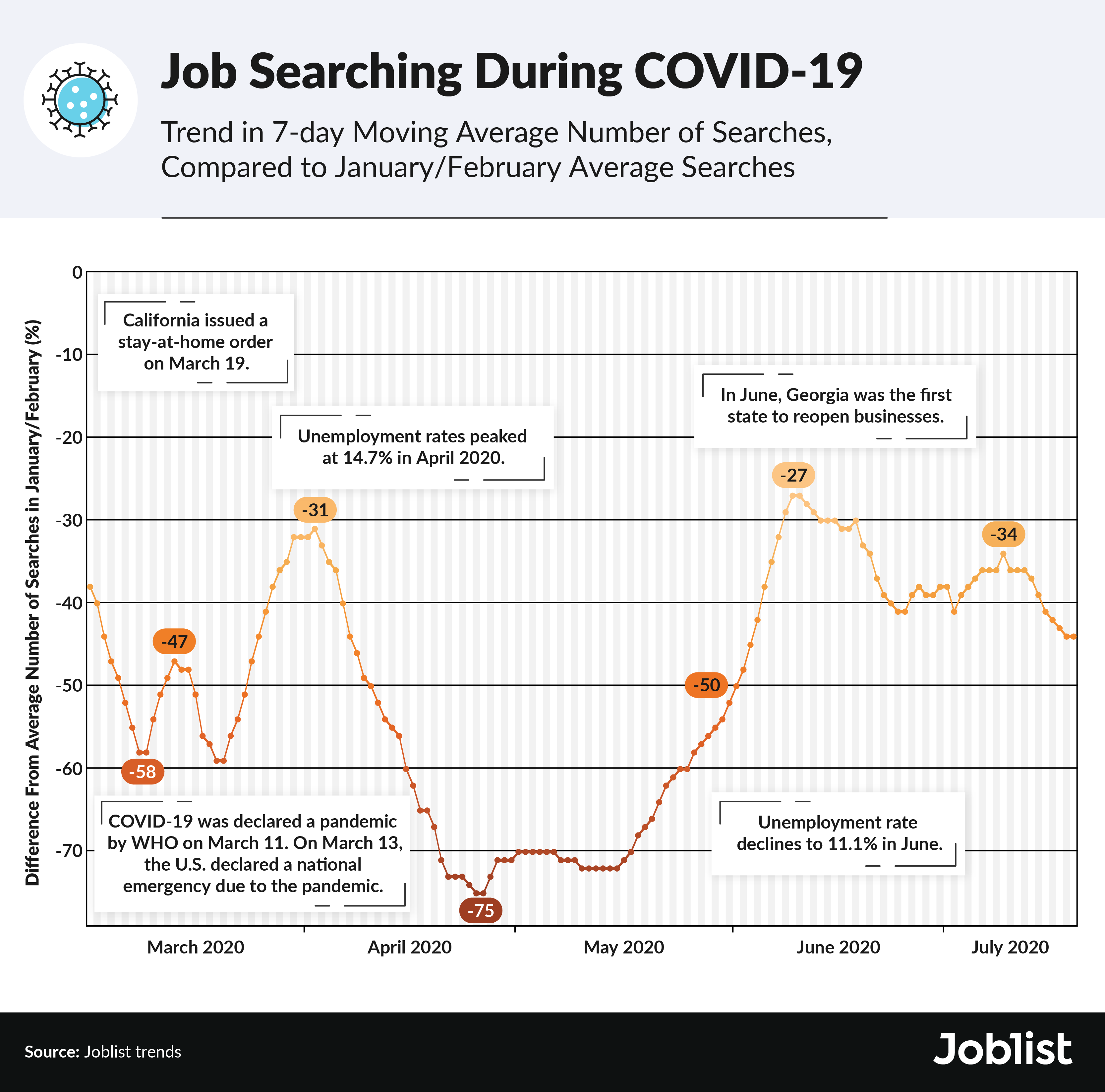
During March and April, 43 states issued stay-at-home orders and directed non-essential businesses to close. The hospitality and retail industries in particular were hit hard by the shutdowns, and a significant number of workers in these sectors were furloughed, along with many other non-essential employees. Such a sudden disruption to in-person activities also meant that normal interviewing and hiring processes screeched to a halt across almost every industry. This resulted in a unique situation where millions of Americans were at home without jobs to go to, but not technically unemployed, or unemployed but not able to get rehired yet due to employer hiring freezes. As a result, job seekers in April were not necessarily spending their time at home looking for new jobs.
Job seeker activity started to rebound in May following a series of reopenings across the U.S. and then peaked in June, even surpassing March levels. July saw a drop in activity of 8% from June levels as COVID-19 resurged in areas across the country, but current activity remains significantly higher than it was in March. The $600 weekly boost to unemployment benefits expired July 31, leaving many out-of-work Americans with only benefits from their state. While August is typically a slow time for hiring, it remains to be seen how job seeker activity will respond to this unprecedented situation.
What Job Seekers Care About Right Now
The COVID-19 pandemic has had deep-reaching impacts on the job market, affecting the way job seekers look for work, what kinds of jobs they are looking for, and what benefits they would like to have in their next jobs. Results from a recent Joblist survey indicate that job seekers would like to have health insurance and a good PTO/sick leave policy in their next jobs, but the ability to work from home doesn’t rank as highly in importance. Most restaurant, bar, hotel, and retail workers — who have been disproportionately affected by the economic shutdown — do not have the luxury of working from home.
About 48% of job seekers rank health insurance benefits as being very important in their next job, while a good PTO/sick leave policy was also ranked highly in importance by 40% of job seekers. Job seekers who lost their jobs due to the pandemic have different preferences for job benefits than those who have not. Those unemployed due to COVID-19 place a higher value on both health insurance and having a safe (i.e. reduced contact) work environment than those whose employment was not affected by COVID-19. Somewhat surprisingly, work from home was only ranked as being very important by 12% of job seekers.
Job seeker activity related to work from home jobs on Joblist surged in April but has since returned to pre-pandemic levels. The first state reopenings began in late April and early May, allowing many furloughed workers to return to their restaurant, bar, and retail jobs (among others). Although some job seekers in these industries undoubtedly sought positions in new sectors impacted less by the pandemic — and more conducive to working from home — it is likely that many waited out the shutdowns or stopped job searching when they were allowed to return to work.

Future Outlook on Employment
Even though the unemployment rate has dropped from April’s record of 14.7%, it remains high (10.2% in July) and far greater than February’s pre-COVID rate of 3.5%. Millions of Americans are still without work, and a majority of job seekers describe the current job market as hard. But despite the new challenges that job seekers are now facing — including virtual interviews or job fairs and fewer job postings in many industries — there is some room for optimism.
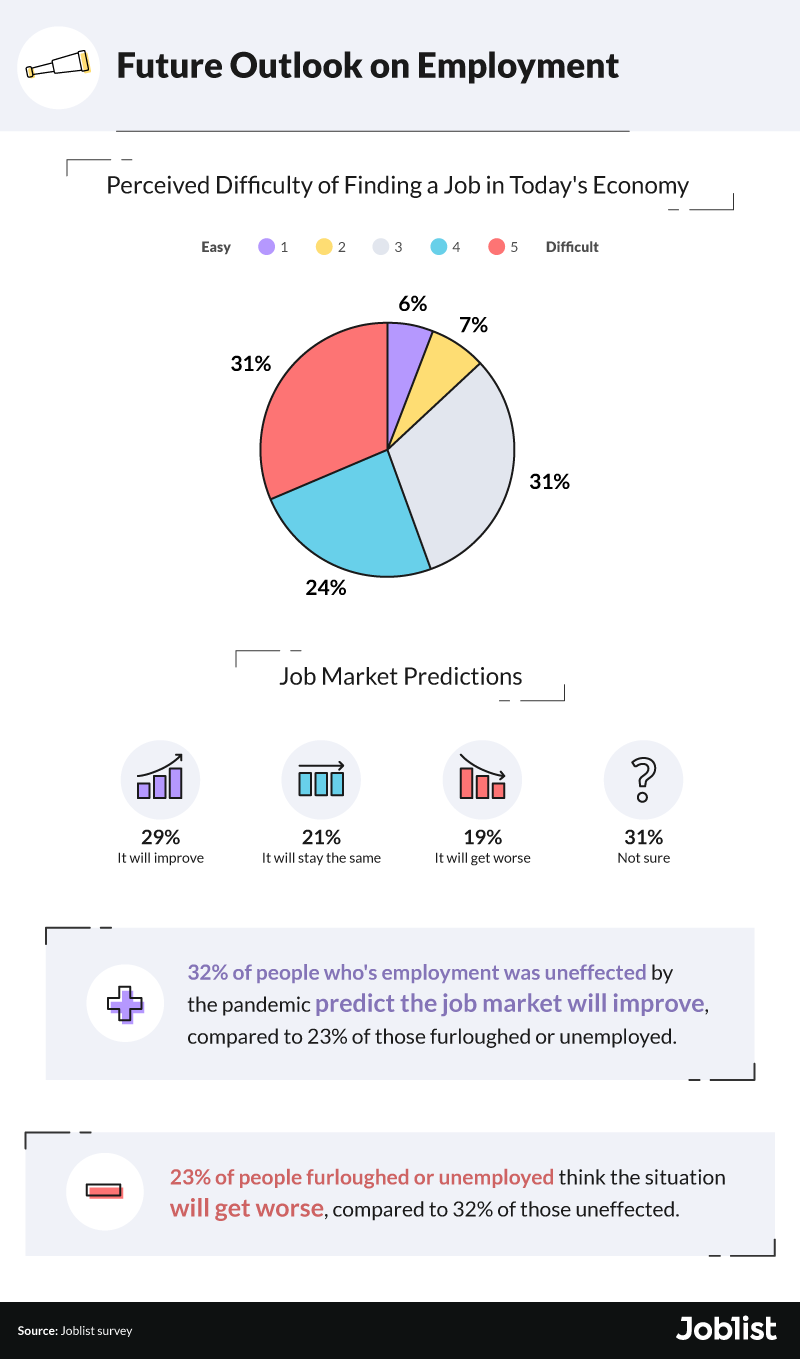
Over half of survey respondents (55%) say that it is "somewhat difficult" or "difficult" to find a new job in the current market, while only 13% say that it is “somewhat easy” or “easy.” Although most survey respondents view the current job market as hard, many remain optimistic about the time it will take to find a job. Nearly three-quarters of job seekers believe it will take two months or less to find a new position, and 42% believe their job search will take less than a month. Job seekers are also divided in their expectations for whether they think the job market will improve in the next month. About 40% of job seekers expect that the job market will get worse or stay the same in the next month, while almost 30% believe it will improve. The unpredictable course of the virus has created significant uncertainty about job prospects.
Unemployed and furloughed job seekers tend to be more negative both about the current job market and the future than employed job seekers. Approximately 70% of unemployed or furloughed job seekers say that getting a job in the current market is “difficult” or “somewhat difficult” compared to just 47% of everyone else. Additionally, only 23% of unemployed or furloughed job seekers expect the job market to improve in the next month compared to nearly one-third of others. Data from the BLS has shown that unemployment duration has been rising for the last few months, and a looming challenge of the pandemic is how to help unemployed Americans get back to work.
Conclusion
Based on our survey, nearly half of American job seekers are currently unsure or pessimistic about the future of the job market. This is a highly uncertain time, and job searching as we know it has already started to change in meaningful ways.
Over the next few months, with unpredictability around the virus and businesses' ability to reopen and function, job seekers can expect the search to be as difficult as ever. As of July, it appears that workers are less interested in working from home now than they were earlier in the pandemic, and instead are placing value on in-person roles that can protect them and keep them safe. It will be interesting to monitor these trends to see if they continue to hold in the coming months.
It’s more important than ever for every seeker to find the right job for their specific needs. At Joblist, we know every job search is different. Helping you find the right job means surfacing results tailored to your experience, industry, and job priorities. Whether you’re a recent graduate, unemployed due to COVID-19, or looking for a remote-work opportunity that will let you keep your home office, Joblist will curate personalized matches based on criteria that you define. Even better, you're not alone in the process — Joblist enables you to share the list of jobs you're interested in with your friends, family, and others in your network so that they can also participate in your job search.
Methodology
We surveyed 2,703 American job seekers about their outlook on the current job market and expectations for the future. We surveyed an additional 1,745 American job seekers about what factors are important to them in their job search right now.
All 4,448 survey respondents were Joblist users. The surveys were conducted over the course of July 2020.
The employment status of the 4,448 respondents was as follows:
Full-time employed: 1,836 (41%)
Unemployed: 1,232 (28%)
Part-time employed: 696 (16%)
Furloughed: 200 (4%)
Other: 484 (11%)
This data has not been weighted, and it comes with some limitations. All of the information in this study relies on self-reporting. With self-reporting, respondents may over- or underreport their answers and feelings to the questions provided.
Fair Use Statement
It’s difficult to predict exactly what the future will hold, but we hope this data helps paint a more vivid representation of the job market in America today. Share these findings with your readers for any noncommercial use by including a link back to this page so they have full access to our methodology and results.

